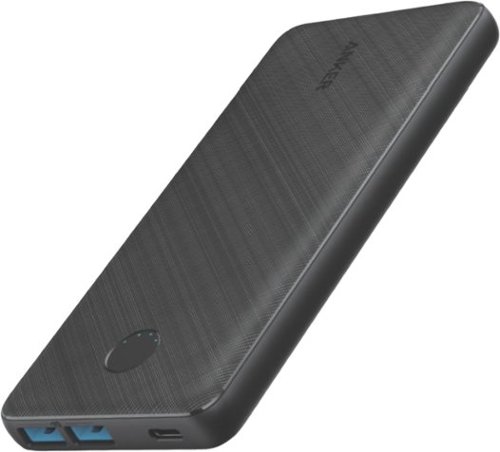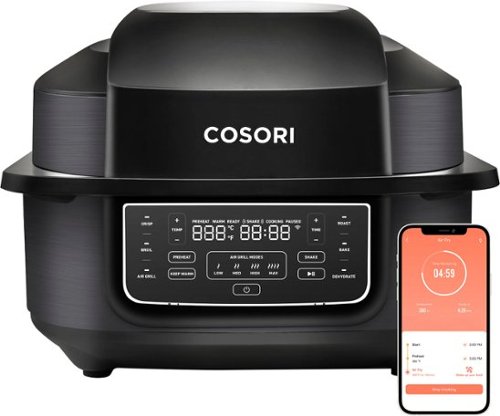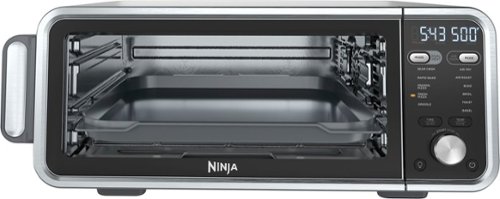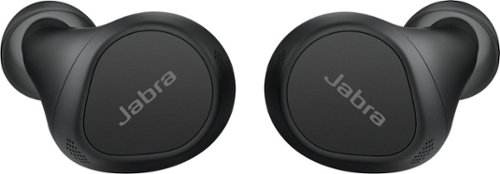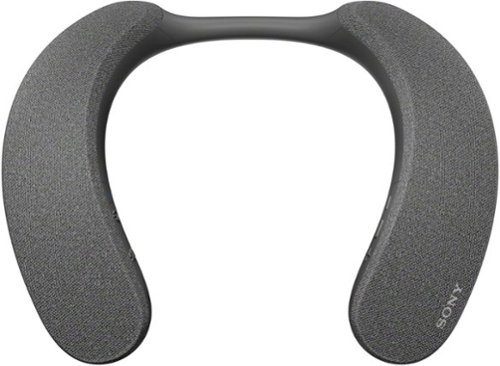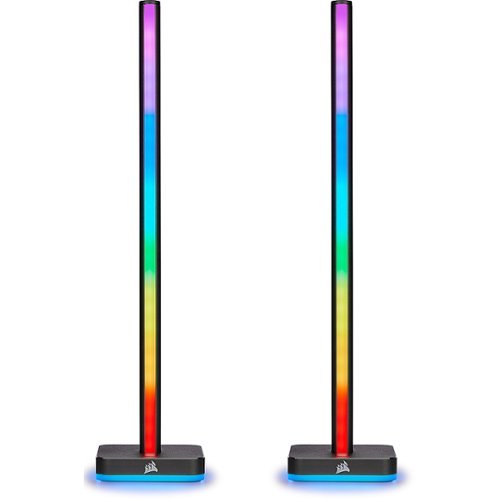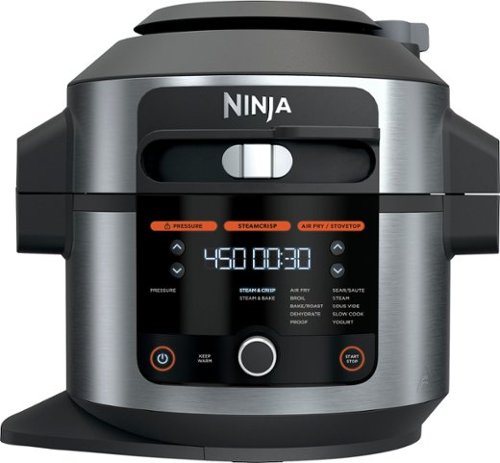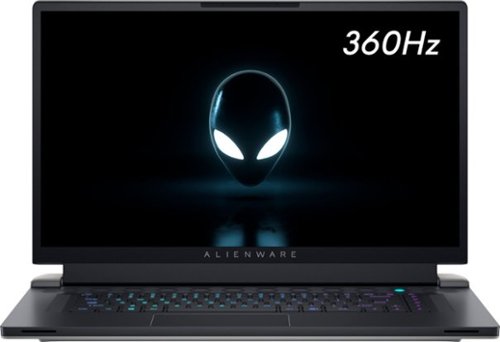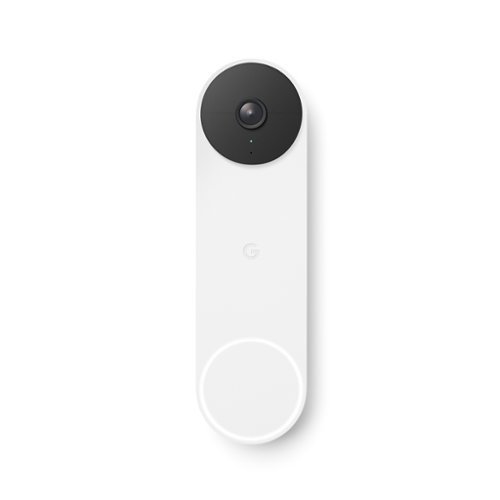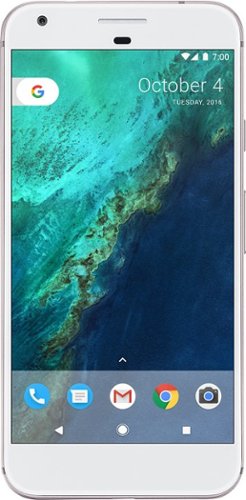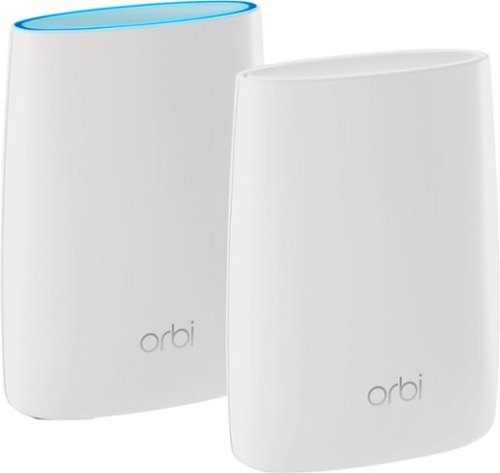Batlacit's stats
- Review count248
- Helpfulness votes928
- First reviewFebruary 13, 2016
- Last reviewDecember 10, 2025
- Featured reviews0
- Average rating4.5
Reviews comments
- Review comment count0
- Helpfulness votes0
- First review commentNone
- Last review commentNone
- Featured review comments0
Questions
- Question count0
- Helpfulness votes0
- First questionNone
- Last questionNone
- Featured questions0
- Answer count55
- Helpfulness votes100
- First answerSeptember 21, 2016
- Last answerJanuary 21, 2022
- Featured answers0
- Best answers11
PowerCore III 20K is a slim and powerful portable 20000mAh battery. With two USB-A port outputs and one USB-C PD input, this is all you need as your charging companion.
Customer Rating

5
Reliable long lasting power
on November 26, 2021
Posted by: Batlacit
from Madison, WI
Power banks are one of those products where it's really hard to be sure if what you're getting is actually worth the price you pay, which is why I'm glad that companies like Anker exist. There's nothing too complicated about their power banks, but they can generally be trusted to do a very good job selecting good parts and practicing stringent quality control. As a result I've found that Anker power banks tend to outlast those from pretty much any other brand I've tried. While I haven't had much time to spend with the PowerCore III, I haven't found anything to suggest that it'll break the trend.
The unit is definitely chunky, but not overly so given how high the capacity is. The casing is a mix of metal and molded plastic, with a slight crosshatch pattern on the top panel that makes it a lot more visually interesting than the usual nondescript black bricks Anker is known for. Charging the bank itself is about as fast as you can expect for a battery this size, and it easily lasted a few days of occasional use charging my Pixel 3XL and my roommate's phone before I needed to top it up again. I even tried using it to top up my laptop at one point. While the output isn't quite fast enough to keep up with the thing while it's turned on, it was a nice fallback to have when I found myself without my charger. And despite what it may say in the description, the USB-C port works as an output just as well as it does an input.
Accessories are very basic, with a mesh drawstring carrying bag and a single USB A to C cable that's about three feet long. Getting a C to C cable would have been nice as it does seem that the USB C port is the only one that lets it charge at full PD speeds, but that's an easy oversight to correct on your own.
It's certainly not the kind of product that'll set the world on fire. But for a lithium ion battery, I think that "reliable" is more than enough. If you're looking for a battery in this range, I doubt you'll go wrong with this one.
Mobile Submission: False
I would recommend this to a friend!
Enjoy a family barbecue in any kind of weather with the Cosori VeSync Aeroblaze Indoor Grill. 8 versatile cooking functions like Crisp, Air Grill, Dehydrate, and more let you whip up anything from delicious lunch to healthy snacks. Use the one-touch functions on the modern display or adjust settings and monitor meals remotely with the free VeSync app on your smartphone. Voice control compatibility lets you make meals with just the sound of your voice when your hands are full with food prep. The pre-installed activated-carbon smoke filter ensures virtually fume-free grilling for the best grilling experience, while temperatures up to 510~F guarantee those crispy grill textures you love. With included easy-to-clean accessories, bonus tongs, a meat thermometer, and a recipe book made by Cosori chefs, you~ll always be inspired to fire up your indoor grill.
Customer Rating

5
Sturdy, powerful, easy to use
on November 26, 2021
Posted by: Batlacit
from Madison, WI
Countertop appliances seem to be going through something of a revolution as of late, with highly capable multi-use mini appliances rendering traditional stovetops and ovens almost redundant. The Cosori VeSync Aeroblaze continues this trend offering a solid indoor grille with some limited smart capabilities and some extra bells and whistles for those willing to give up the counter space.
One of the first things you'll be likely to notice on taking the unit out of its package is how sturdy everything is. The unit itself is a mix of stainless steel and molded plastic with most of the structural elements opting for metal as well as a few parts you wouldn't usually expect, such as the housing for the smoke filtration. The main pot, grill, and air fry basket are all solid non-stick metal and designed to nest within one another for easy storage. All are advertised as dishwasher safe, and after several trips through I haven't noticed any decrease in their non-stick performance. I did notice that the removable splatter shield designed to protect the heating elements had been slightly damaged when being packed up though, with a small but noticeable bend in the frame on one side. It was easy enough to bend back into shape by hand though, and I haven't noticed any further problems with the fit.
As far as using the grill, while it looks somewhat intimidating at first glance I found the overall experience to be very user friendly. A combination of auditory and text alerts will let you know when it's ready for each stage of cooking, and it's remarkably resistant to common and not-so-common mistakes. The first time I tried to use it It ended up blowing the breaker in the GFCI outlet I had it plugged into, which I figured would mean starting over. But when i plugged it back in I was surprised to see that it still remembered the original program. And the food came out perfectly cooked in every setting and configuration I tried, with the charring on chicken and beef being better than any other countertop grills I've tried in the past.
The smart functionality is present but, if I'm being honest, a bit underwhelming at this point. As often happens with new smart products the hardware seems fine but the software seems to leave a bit to be desired. There's basic voice control through both Google and Alexa, which is always a plus, as well as the option to have the grill send push notifications in addition to the usual alerts. In theory it's all very good but the implementation definitely seems a little buggy right now, as I noticed several instances of alerts being delayed and in one case missed completely during my time with the unit. You're also not going to find any pre-programmed routines or monitoring to help you keep track of the food. The app does have a few recipes it can offer but for the moment at least the offerings are decidedly sparse with just a handful of suggestions produced by Cosori itself and a couple user-submitted options. I'm hoping this is something that they can improve on with time, however, so this might end up being an issue that only applies to early adopters.
Finally, I want to talk about storage. Personally I don't use a grill nearly often enough for this to have a permanent place on my kitchen counter, so if you're like me you're probably expecting this to spend a lot of time in a cupboard. It's definitely not a small device, easily taking up half of the cabinet I put it in, but the fact that all the parts and accessories can be stored inside the unit makes it very manageable. Provided you know what you're getting into I don't anticipate any problems in that regard, though it does annoy me a bit that it lacks convenient grab points to make it easier to drag out of the cupboard when needed.
Overall despite a few minor issues with the design and user experience the Aeroblaze is a solid first offering from Cosori. I'd recommend it for anyone looking for a decent grill, air dryer, or dehydrator.
Mobile Submission: False
I would recommend this to a friend!
The Ninja Foodi Dual Heat Air Fry Oven gives you versatility in the kitchen with 11-in-1 functionality from Air Fry and Sear Crisp to Rapid Bake and Toast. With Dual Heat Technology, unlock up to 500~F cyclonic air and a directly heated SearPlate, which allow for fast cooking and restaurant-worthy results. Cook up your favorites and then flip the oven up and away to reclaim your counter space.
Customer Rating

5
Powerful little oven
on November 9, 2021
Posted by: Batlacit
from Madison, WI
I've gotten used to having Ninja combine multiple kitchen appliances into one package, but I'll admit I was a little thrown by their decision to combine a toaster oven and a griddle. After spending a week making dinners with it though, I've come to appreciate the method behind their particular madness.
In most regards this oven is basically just a minor upgrade over their previous design with a bit more capacity and an improved set of controls. But add in the sear plate to the bottom and you get something that's does things I'm really not used to seeing in an oven. It cooks fresh and frozen pizzas to perfection in less than twenty minutes, puts a perfect sear on sous vide cooked steaks, and even bakes cookies in style.
The overall design is well thought out and surprisingly compact. In addition to the sear plate you get a basic grille and air fryer basket, all of which can be stored inside the unit when not in use and have their own dedicated rails within the oven body a cinch. When you're done cooking it flips up flat against the wall to help you recover counter space, and features adjustable cable management that can hide the wires almost perfectly with some proper positioning. And the stainless steel and glass exterior cleans up nicely with a minimum of effort. If there's one downside it's that the accessories aren't entirely dishwasher safe. The manual doesn't say you can't do it at all, but warns that running them through the dishwasher will likely significantly shorten their lifespan. I suspect this is due to the nonstick coating on the sear plate in particular. Good news is that because of that coating it's been pretty easy to clean after each use so far - time will tell how it holds up long term.
Cooking with the oven is also a great time saver. With how small the interior is compared to most ovens you don't have a big mass of air working to soak up heat, which means that it reaches full temperature in just a few minutes. And with the fans circulating that hot air around inside the compartment it's far more efficient in transferring that heat to your food, resulting in cook times that are generally cut in half if not further. The documentation includes a cookbook with a decent collection of recipes and suggestions on how to adapt your existing cooking instructions for the oven, and I've found these to be fairly accurate. That being said I'd definitely recommend keeping a close eye on anything new you want to try in it, as there is very little margin for error to be had.
Oh, and it does toast too. ...It is very good toast. Not sure what more there is to say on that, really.
I'm not sure it's quite big enough to completely replace a standard oven. But for most every day baking jobs like roasting vegetables, searing a steak, or reheating leftovers it's definitely a faster and frequently more user-friendly alternative. And being able to properly cook things like homemade pizza which really requires a much hotter oven than you'll usually find in a kitchen opens up a ton of possibilities for more creative baking. After getting used to this, I don't think there's any way I'd go back to my old pop-up toaster.
Mobile Submission: False
I would recommend this to a friend!
Jabra Elite 7 Pro true wireless earbuds have MultiSensor Voice~ technology, which combines 4 powerful microphones, an advanced Voice Pick Up (VPU) sensor in each Bluetooth earbud, and unique Jabra algorithms. Automatically activating when it~s windy, Jabra MultiSensor Voice~ uses bone conduction technology to transmit your voice through vibrations in your jaw, for wind noise cancellation and clear calls anywhere. Thanks to the adjustable Active Noise Cancellation, the ultra-compact earphones with rich and powerful sound lets you fully immerse yourself in your music. Multipoint connects to 2 devices at once, lets you seamlessly switch between devices, and is available as a firmware update via the Jabra Sound+ app. Also test your hearing in the Jabra Sound+ app, and tailor your music to suit your individual hearing profile. Hear your surroundings while on a call with the HearThrough technology - use left or right earbud alone with Bluetooth Mono Mode - Each offers up to 8 hours battery and 30 hours with the case.
Customer Rating

5
Another great entry from Jabra
on November 4, 2021
Posted by: Batlacit
from Madison, WI
I've been carrying an older set of Jabra earbuds around in my pockets for a few years now, and they have served me well. But after daily brushes with my phone, keys, and in one instance a near miss with a washing machine (oops) they've been starting to show signs of their age. So when the opportunity to pick up the latest and greatest version arose, I was eager to see what they'd come up with. And it turns out Jabra's been very busy.
If you've never owned a set of Jabra earbuds before, I can't say that you can go wrong getting started now. They may not have the name recognition of some of the luxury brands, but they can easily match them blow for blow when it comes to features and audio quality. The sound you get out of these is amazingly rich for their size, the built in microphones offer great utility for phone calls or video conferences, and they hold themselves in your ear amazingly well provided you've got the right plugs installed. All in all they offer a decidedly premium experience.
If like me you've already got a set of Jabra buds, you'll likely be very pleased to see the improvements they've made. The earbuds are significantly lighter than the previous generation, making them more comfortable for extended use (essential if like me you like to use them for remote meetings.) The case now features wireless charging and a longer lifespan which makes them far more convenient for all day use, though this does come at the cost of a slight increase in size and weight. And the new ANC feature has significantly improved the already great passive noise isolation. And if you really want to dial things in but don't have any of the expertise to do so, the updated app combined with the improved mics in the Elite 7 Pro means they can self-adjust some of their more fiddly features to really dial in the sound quality and noise cancellation. I'll admit that I don't have the kind of ear needed to really tell how good a job the app does at this, but I can definitely say it is doing something.
I've been using it pretty extensively for a few days, and found that overall it works more or less as you'd expect. The system meant to automatically detect wind noise and switch to bone conduction for voice pickup was a little unreliable my first day, but after that I applied a firmware update which seemed to improve performance somewhat. Audio is definitely better with the mics when they're available, but the bone conduction option is definitely good enough. The noise cancellation also definitely worked better on louder engine noises than it did on household fans, air purifiers, and other electronic noises, so they may not be the best pick if that's your main concern. That said they also didn't produce the same kind of persistent pressure in your ear canals that I've noticed on other more thorough noise cancelling headphones and earbuds, so if you expect to be wearing these throughout the day they're a little less headache inducing. And while I still wouldn't call them my first pick for strenuous activity or exercise, I was unable to dislodge them from my head no matter how firmly I shook myself around on walks and light runs with my dog.
It definitely feels like a product primarily being aimed at professional users who need a portable and lightweight option for hands free calls. I can't really say that I've ever seen a set of earbuds that put this much effort into making sure that call quality remains consistently good regardless of ambient audio, something that I feel most earbuds treat as an afterthought at best. That said, I can't say I spotted anything that's been cut in service of that goal. They are remarkably solid all-rounders, and a worthy successor to my own battered pair.
Mobile Submission: False
I would recommend this to a friend!
Explore a new world of personalized home theater audio. The SRS-NS7 Wireless Neckband Speaker uses Sony~s 360 Spatial Sound Personalizer technology to envelop you in the rich audio of your favorite shows and movies, while being unobtrusive to others in your home.
Customer Rating

2
Interesting idea but no replacement for headphones
on October 27, 2021
Posted by: Batlacit
from Madison, WI
As someone who lives with someone who has days where they are hypersensitive to sound, the idea of a wearable surround sound system seemed almost tailor made for me. Unfortunately after spending a week with the SRS-NS7, I've come to the conclusion that I might have to stick with my trusty pair of headphones for now. It's not that it's a bad system, per se, but it is severely lacking in polish and requires you to jump through a few hoops to get the most use out of it.
One thing that Sony definitely did nail was the overall design. The speaker is surprisingly light for how big it is, but still sturdy enough to hold up to the occasional rough handling. Controls are easily accessible, intuitive, and large enough to be operated by touch. And it's got enough battery to last through even the most intense binging sessions.
Unfortunately, it has to be said that if you want to get the best surround sound performance you pretty much need to have a Sony TV with their Bravia XR tech built in. As far as I can tell that is the only way to get the surround sound functionality to work, as every other mode limits you to simple stereo output. I generally wouldn't be too concerned by that if not for the fact that it really doesn't seem to want to do that. The speaker relies on a fairly standard bluetooth connection to receive audio. The first thing I tried out of the box was to pair that to a home theater projector with an Android TV streaming box hooked up to it, just to see how the quality compared with the included receiver. No matter what I tried, I could not get the speaker to accept the pairing with the projector. This is a process I've done several times before and I've never had anything like this happen. So I decided to try pairing it with the streaming box instead. It took multiple attempts but I was eventually able to get the two to talk to each other - but the audio it provided was of such poor quality that there really wasn't any point. Finally I tried pairing it with my cell phone (with Sony's app installed) and was able to get it to work. And the audio was... okay. There was surprisingly little bass response, the higher end sounded somewhat tinny, and while it was quieter than using standard speakers it was still clearly audible from several feet away.
I'd figured that I might have less trouble with the included transmitter, but while that did help improve the sound quality I still found myself underwhelmed. The only format it is compatible with is optical. While it's true that this is a port that's often not used on modern home theater systems which rely on HDMI-ARC, there are a lot of people who may still be relying on optical hookups with a dedicated receiver who might end up having to switch between the two. It's also worth pointing out that we are now starting to see home theater gear being shipped without optical hookups at all, which means you'd need an audio extractor if you don't want to rely on the hit-or-miss bluetooth pairing. Also, the speaker doesn't have any kind of intelligence to help simplify its use. After I was done testing it I hung it up and turned off the TV, thinking that the speaker would shut itself down once it stopped getting a signal. Instead the next day it suddenly announced that it was shutting down due to having exhausted its battery. It's been so long since I had to think about physically turning off a bluetooth speaker it took me completely by surprised.
If you own a high end Sony TV or can't use standard headphones for whatever reason, this might be something worth trying. It is an interesting idea, even if the actual implementation falls somewhat short of living up to it. But as things currently stand, I can't really recommend these as they are to anyone but early adopters.
Mobile Submission: False
No, I would not recommend this to a friend.
Extend your PC~s RGB lighting with the CORSAIR iCUE LT100 Smart Lighting Towers Starter Kit, part of the iCUE Smart Lighting Ecosystem. 92 RGB LEDs light up your room with ambient lighting that dynamically integrates with your games and media for a truly immersive experience. Cycle through 11 lighting profiles out of the box with push-button control or connect to CORSAIR iCUE software to synchronize your RGB lighting effects across all compatible CORSAIR devices in your system and all external iCUE Smart Lighting devices. The Starter Kit includes two lighting towers with 46 customizable LEDs each, housed in light-diffusing casing that softens and blends light. With an included removable headset holder, LT100 Smart Lighting Towers add convenient, versatile, and stunning RGB lighting to any setup.
Customer Rating

4
Gamer Lamp
on October 26, 2021
Posted by: Batlacit
from Madison, WI
iCue's smart lighting towers pretty much exemplify the gamer aesthetic. They are flashy, surprisingly robust, potentially quite cool, and excessive in the most fun way imaginable. I'm not going to try to sell you on the idea that there is some kind of practical application for this thing (though I suppose with enough tinkering one could figure out a few) but rather let you know how these things work as the high-end gamer lamps they are.
First up, Corsair's brought their a-game as far as overall asthetics. The towers are mostly machined metal, with the exception of the diffuser and the plastic headset hook. The LED's are bright and provide very vibrant colors, though getting the colors to match what you're getting on the screen may require a little bit of trial and error. the silicone diffusers are just a little sticky, which makes me wonder if they might have issues with dust collection long term, but seem like they should be reasonably easy to wipe down. And the iCue software offers a tremendous amount of control over the effects you can create with the lights, giving you plenty of control over the light show. The one thing that did cause me some grief at first was that before I had them hooked up to my PC, only the master tower (with all the I/O and hookups) lit up. I tried manually detecting the second tower by holding down on the power button as the instructions suggested, but didn't get any response until started setting the device up in iCue. At first I figured I was looking at a wirebreak (more on that later) and I'm very glad I tried with the software before reaching for tech support.
Unfortunately there are a few more practical concerns that keep me from giving it full marks, which Corsair can hopefully improve on going forwards. First up is the cable linking the two towers together. The RGB cable it's using is pretty much built like the RGB cables you'd use for your case lighting. While there's something to be said for standard parts, I have some concerns about its durability. The individual wires leading into the plug are unsleeved and lacking any kind of strain relief. In a perfect world you'd have the cable run along the back of a desk with tie downs or a hidden wire channel keeping it safe - but in the real world all too often this long crossover cable is going to be left out in the open on a desk that frequently sees junk being strewn around on its surface or bored cats batting at anything that looks remotely similar to string. It seems worryingly plausible that this thing could be getting regularly shoved around or caught on something, eventually leading to a wire break near the socket. Even though it would add to the cost it seems like it might be worth investing in a slightly more robust option to link the two towers together.
The second thing that I think could potentially use some improvement is the power cable. It seems the towers draw down a bit too much current to run from USB alone, so they've got their own power brick with a cord that turned out to be about 8 inches too short to get around to both sides of my 32" monitor when plugged into the UPS under my desk. It's an easy enough fix, but given how slick the towers themselves are and how long the crossover cable is it feels like the kind of thing that shouldn't be necessary.
Ultimately though I'd say these are fairly minor issues to have to deal with if you're looking for a literally flashy way to store your headset. And let's face it - you already know if this is something that's worth having for your setup. As extravagant gamer lamps go, this is definitely one of the better ones!
Mobile Submission: False
I would recommend this to a friend!
Meet the Ninja Foodi 14-in-1 6.5qt. Pressure Cooker Steam Fryer with SmartLid. The pressure cooker that steams and crisps. SmartLid slider unlocks pressure cooking, air frying, and Steamcrisping - all under one SmartLid. SteamCrisp Technology steams and crisps at the same time for faster, juicier, crispier results*. 14 one-touch programs unlock even more versatility. (*Vs. Ninja Foodi OL501 in dry mode only)
Customer Rating

5
An improvement on an already excellent product
on October 21, 2021
Posted by: Batlacit
from Madison, WI
The original Foodi pressure cooker was, hands down, my favorite small appliance. It was easy to use, genuinely cut down on the time you had to spend in the kitchen, and required nothing in the way of compromises in terms of what you could do with it. It got to the point where I barely even touched my full sized stove or oven, because I simply had no need for it. In my mind it came very close to being the perfect appliance.
So naturally, Ninja followed it up with a new version that does everything the original could and more, looks better, and takes up half the counter space. I swear, it's like they're reading my personal wishlist.
In the past week I've made a few old favorites as well as trying some things that my old Foodi never could. Like steaming a cake. I don't know how half of it works, but work it does, and very well. Sadly I haven't had a chance to try some of the newer features like the sous vide function, but I'm looking forward to doing so soon. So, rather than endlessly singing the praises of how great the product is, here's a brief rundown of what I've made with it and how it turned out:
1. Caprese chicken with pesto pasta
My first attempt at steamcrisping resulted in some perfectly cooked Orzo, juicy chicken breasts, and delightfully crispy mozzarella cheese. For whatever reason the recipe didn't call for any kind of seasoning on the chicken apart from a pesto marinade. If I were to make it again I'd definitely add some salt and pepper, as the chicken didn't soak up nearly enough of the flavor of the pesto.
My first attempt at steamcrisping resulted in some perfectly cooked Orzo, juicy chicken breasts, and delightfully crispy mozzarella cheese. For whatever reason the recipe didn't call for any kind of seasoning on the chicken apart from a pesto marinade. If I were to make it again I'd definitely add some salt and pepper, as the chicken didn't soak up nearly enough of the flavor of the pesto.
2. Mac & Cheese
Pressure cookers were made for this kind of dish. The recipe I used skipped the usual process of making a roux, instead relying on the starch from the pasta (cooked in low sodium chicken broth) to thicken the cheese sauce. Everything can be taken care of in a single pot, the texture you get is amazingly creamy, and basically 0 effort is required for any of it. You just dump the ingredients into the pot, wait for it to beep at the appropriate time, and stir. And if you want to go for a breadcrumb topping to make it look just a bit more sophisticated, a few minutes under the heat of the broiler does the job nicely. Cleanup took a little longer than usual due to the stickiness of the cheese, but it was still a lot easier getting it off the non-stick coating of the pot than it was getting it off the bowls we served it in.
Pressure cookers were made for this kind of dish. The recipe I used skipped the usual process of making a roux, instead relying on the starch from the pasta (cooked in low sodium chicken broth) to thicken the cheese sauce. Everything can be taken care of in a single pot, the texture you get is amazingly creamy, and basically 0 effort is required for any of it. You just dump the ingredients into the pot, wait for it to beep at the appropriate time, and stir. And if you want to go for a breadcrumb topping to make it look just a bit more sophisticated, a few minutes under the heat of the broiler does the job nicely. Cleanup took a little longer than usual due to the stickiness of the cheese, but it was still a lot easier getting it off the non-stick coating of the pot than it was getting it off the bowls we served it in.
3. Lemony chicken piccata
Again, you're able to cook the crispy chicken and the pasta in the same pot at the same time, requiring only a plate to coat the chicken cutlets with before they go in. Unlike the first chicken dish I tried I remembered to include some salt and pepper which resulted in a result that was both moist and flavorful, with a delightfully crispy exterior.
Again, you're able to cook the crispy chicken and the pasta in the same pot at the same time, requiring only a plate to coat the chicken cutlets with before they go in. Unlike the first chicken dish I tried I remembered to include some salt and pepper which resulted in a result that was both moist and flavorful, with a delightfully crispy exterior.
4. Chicken pot Pie
This was one of the tastier recipes I tried from the included cookbook, so of course I decided to try and put my own spin on it. I added a few more veggies, swapped out the pie crust for some flaky biscuit dough. it almost got away from me as I forgot to consider how much faster the biscuits would be done when compared to a pie crust, but fortunately the smell from the unit as it cooked clued me into it in time to prevent anything but the top layers to get burned. The filling came out perfectly though.
This was one of the tastier recipes I tried from the included cookbook, so of course I decided to try and put my own spin on it. I added a few more veggies, swapped out the pie crust for some flaky biscuit dough. it almost got away from me as I forgot to consider how much faster the biscuits would be done when compared to a pie crust, but fortunately the smell from the unit as it cooked clued me into it in time to prevent anything but the top layers to get burned. The filling came out perfectly though.
5. The Cake
The cake was made using a standard boxed mix, minus some of the usual water and "steambaked" inside the unit basically just to see if I could. Despite the lower water content the cake came out wonderfully moist and springy, though it rose perilously close to the heating element at the top of the lid. Given that I'd probably hesitate to recommend trying any of the cakes that are more aggressive risers unless you spring for the 8 quart deluxe version, but with the plain white cake mix I was using it was fine. My roommate pointed out that this might be a great way to introduce some additional moisture to vegan cakes, but I will admit that I don't know enough vegans to explore this in more detail.
The cake was made using a standard boxed mix, minus some of the usual water and "steambaked" inside the unit basically just to see if I could. Despite the lower water content the cake came out wonderfully moist and springy, though it rose perilously close to the heating element at the top of the lid. Given that I'd probably hesitate to recommend trying any of the cakes that are more aggressive risers unless you spring for the 8 quart deluxe version, but with the plain white cake mix I was using it was fine. My roommate pointed out that this might be a great way to introduce some additional moisture to vegan cakes, but I will admit that I don't know enough vegans to explore this in more detail.
So, having gone through that, is there anything I have to say against the Foodi?
...It does still take up quite a lot of counter space, so if you don't plan to use it somewhat regularly it might be hard to work around. Also this smaller version does lack a few of the nicer features of the 8 quart version, such as an integrated meat thermometer or support for larger baking pans. But for most users, I think the slightly smaller size of this unit will have its own appeal.
Mobile Submission: False
I would recommend this to a friend!
The new Alienware x17 is super thin, extremely light laptop . Now~s your chance to game with gear that knows no boundaries. The Alienware x17 gaming laptops with advanced Alienware Cryo-Tech~ cooling defy boundaries. Introducing Element 31 thermal interface material and a Quad-Fan Design. We are incorporating more fan blades, more copper materials, and vapor chambers to deliver ample power while dissipating the heat more efficiently and allowing the fans to run less resulting in reduced noise. The x17 features five tailored power states, and grants access to thousands of games with Windows. Alienware laptops will bring your favorite games into hyper-reality with Windows DirectX 12 Ultimate. Constructed with magnesium alloy and aluminum parts gamers can experience the evolved Legend Industrial Design that reimagines the way you game. The Alienware x17 is equipped with 11th Gen Intel processors, has more storage options with dual drives featuring SSD and includes powerful NVIDIA~ GeForce~ RTX 30-series discrete graphics.
Customer Rating

4
Solid Gaming Laptop (in more ways than one.)
on October 14, 2021
Posted by: Batlacit
from Madison, WI
The Alienware X17 is definitely one of those gaming laptops you get the sense is always going to be more comfortable on a desk than it is in your bag. It’s large, heavy, and quite clearly unconcerned about that fact. The overriding concern here seems to be to maximize gaming performance, no matter what that might cost. It’s a refreshingly straightforward design philosophy, though it’s certainly not without its drawbacks.
The first thing that struck me when I took the laptop out of its box was the heft. It’s a bit on the heavy side even by the standards of 17” laptops, likely owing to how much of the frame and case is made of metal instead of plastic. To its credit it is also surprisingly thin, though even with that I have my doubts that I’d want to regularly be carrying this around with me. Build quality feels very solid overall with no flex in the frame and decently torquey hinges for the monitor, and the case is easily opened for cleaning/upgrades. Unfortunately it is a bit of a fingerprint magnet and I started seeing visible signs of wear on a few of the keycaps after just a couple days of typing, so if you want to keep it looking like it just came out of the box you’ll definitely need to work at it.
Aesthetically it’s about what I’ve come to expect from Alienware. The case is very sleek and has a bit of a Cyberpunk vibe with the white case and Neon-esque light bar around the rear IO. There’s also plenty of RGB and a wide variety of colors to choose from to customize the unit, though it is undercut slightly by the fact that it’s all run through Alienware’s somewhat dated implementation. There are only a few effects to choose from and they all look decidedly jerky in action, which feels a bit out of place for a gaming laptop in this price range. That said it does offer a very wide range of colors to choose from and static lighting looks pretty good, so maybe a future software update can do something about that. And even with the lights off, the contrast between the white and black elements in the case is plenty striking. It’s a laptop that’s designed to turn heads, and it’s good at it.
Which brings me to the most important part of a gaming laptop: the hardware that runs it. The X17 is banking on two things to deliver a premium experience here: an impressive selection of premium parts attached to a cooling system that seems to border on overkill. The X17 features 4 blower fans to circulate air within the chassis as well as a propriety gallium based thermal compound they’ve billed as “element 13.” Cooling is one of the most important parts of a gaming machine, and one of the hardest to squeeze into a laptop. In theory, going with that many fans should let the machine sustain peak clock speeds for both the GPU and CPU much longer, resulting in more stable framerates at higher quality. Unfortunately, despite my best efforts, my experience has been a bit mixed. In synthetic benchmarks the laptop seems to do very well, handily beating another laptop with similar specs I compared it to. When I was actually playing games like Cyberpunk 2077 though, the difference in performance seemed considerably more narrow. In a few cases the other laptop (with only two fans and a less powerful CPU) actually beat the X17’s framerates. Based on the temperatures I recorded it seems that even with the improved cooling it’s still very easy for the 3070 to start thermal throttling with the most demanding titles. Slightly older games like Shadow of the Tomb Raider did a bit better, but it seems that even with the improvements made there is still some work to be done to address the difficulty of keeping high powered laptops cool. That said there may be a fringe benefit to this system. With four blower fans, the static pressure within the cooling path should be high enough to slow down the rate at which dust builds up inside it, potentially extending the laptop’s lifespan.
The rest of the hardware is generally very good though. The screen doesn’t have the best black levels but more than makes up for it with a blisteringly fast 360hz refresh rate. The keyboard on the model I received didn’t have the fully mechanical keys some models advertise, but still felt pleasantly tactile while typing and gaming. And the I/O is very generous with everything you might need for everyday use or more demanding applications like PCVR headsets. The only downside is that apart from the power jack it’s all on the rear of the laptop – which I’ve come to realize is more than a little annoying for everyday use. There’s no really easy way to plug in a flash drive or the like without closing the laptop and flipping it around, at which point you realize that the lighting around the ports is designed in such a way that it’ll make it almost impossible to pick out something as small as a USB port in a dark room. I know that space is no doubt at a premium inside this thing, but if Dell’s engineers could figure out a way to move a USB-A or C jack around to the side in future versions it would be a lot easier to work with. The drive and RAM are also nothing too special – which I suspect is one of the reasons the system only scored middling benchmarks in my testing – but they’re both socketed and thus could be relatively easily swapped out with enthusiast grade parts for anyone looking to unlock the full performance the CPU and GPU. Given how many machines these days are switching over to using a mix of soldered and socketed parts, this is a very welcome addition.
Finally, I’d like to talk a little bit about how the machine is to use for non-gaming tasks. With the kind of hardware it’s got it could be a very potent machine for video editing, AI development, or just inspiring envy in your fellow database admins with how quickly it can complete a lookup operation. And I was very pleased to see that they actually included a webcam capable of doing facial recognition for your Windows login, something that works very well on Windows 11. That said… it’s also quite clearly a gaming laptop first. It’s got a decently large battery in it, but everything just draws so much power that it runs out fast even on eco-mode. After seeing gaming laptops that can deliver 16+ hours of light use I was a little shocked to find this one asking to be plugged in after just three hours of web browsing and light media consumption – and if you want to actually game on it you should expect the battery to be gone in about thirty minutes. You could probably extend that a little by attaching a power bank to one of the USB-C ports, as it appears it does support USB charging to some degree, but I wouldn’t expect that to give you more than a few minutes given how low the wattage of USB chargers are compared to the hefty power brick that comes with it.
Overall, while the X17 may not be the best gaming laptop money can buy it’s still a highly capable unit with a lot to recommend it as a desktop replacement for the habitual gamer. It’s probably not going to be my daily driver given how heavy it is, but it’s definitely going to be the machine I bring to the next LAN party I attend.
Mobile Submission: False
I would recommend this to a friend!
Connect additional ports to your device with this Satechi USB-C multi-port adapter. The two USB-A 3.0 ports transfer data from storage drives, while the USB-C port supports fast charging. This Satechi USB-C multi-port adapter features a compact design to seamlessly fit in your backpack, and the HDMI port connects external displays to show 4K videos.
Customer Rating

5
Essential accessory for an ultraportable
on October 3, 2021
Posted by: Batlacit
from Madison, WI
One of the biggest issues with modern laptops is the fact that there really isn't enough space for a full range of I/O anymore. This has made products like this multiport adapter all but essential if you're looking to use an Ultrabook as your primary machine, and after spending a week with this particular one I have to say it does a pretty good job.
The minimalist design makes this very easy to slip into a bag or pack, and seems sturdy enough to survive rattling around with anything else that might be in there for a prolonged period. Functionality on all the ports seems more than adequate as well.
There are a few limits you should probably be aware of. It can't quite match the speed or bandwidth you can get with a native port. Power delivery over USB-C is also limited to a hundred watts. That's enough to handle most productivity focused systems, but isn't going to be able to keep up with the power draw of a dedicated GPU. But these are things to be expected for anything other than a proprietary docking station, and I never found it to be a serious problem as I was using it.
I'd recommend this to anyone who's fed up having to constantly swap out dongles on their laptop.
Mobile Submission: True
I would recommend this to a friend!
The Nest Doorbell is the battery-powered video doorbell that works with any home. See what~s happening at your door from anywhere and get intelligent alerts about important activity, like when there~s a person, package, animal, or vehicle.* And because there are no wires, you can install it yourself. Nest Doorbell requires the Google Home app and a Google Account ~ it~s not compatible with the Nest app or the home.nest.com site.
Customer Rating

5
Does everything I'd hoped with a minimum of fuss.
on September 26, 2021
Posted by: Batlacit
from Madison, WI
Like many people over the last couple of years, I've found that I've been ordering a lot more stuff online than I used to. Thing is that getting to my front door isn't always the easiest thing to do, particularly with large items. As such I've been experimenting with having packages delivered to my garage instead, which is located at street level and has smart features that allow it to be opened up and closed for deliveries... provided I know that someone's there. With only one delivery service having a system set up to open the door on their own putting a doorbell down there has been on my todo list for a while, but never ended up happening because it would require running a lot of new wire that I really did not want to run.
The Nest battery powered doorbell was the perfect solution to my general laziness and dislike of masonry drills. It took me about five minutes and four screws to have it perfectly mounted by the garage door so cleanly you'd think it was always there. Using the included 20 degree wedge I get a great view of the approach to the garage and the driveway, notifications of deliveries (that can even spot packages left on the ground if the delivery person doesn't give me a chance to open the door!) and a pretty decent two way intercom to let them know to leave the box inside. Best part is that if I do ever decide that I'm getting tired of taking it down to recharge the battery, the option to wire it in to a conventional doorbell system is still there!
Integration with the Google Home ecosystem was about as painless as you would expect, and I've found it works great with both Google's own smart speakers/displays and third party ones from Lenovo and Sony. The AI responsible for recognizing faces and boxes is pretty sharp, almost to an excessive degree in fact. The first day I had it up it sent out a few alerts for people it spotted in cars driving past in the street, though fortunately this was easily fixed by adding an activity zone to narrow its scope a bit. The only thing I'd mark it down for is that if you want to unlock the full smarts off the AI which includes things like telling you the name of the person who just showed up at the door or acting as a basic home security system you'll need to pay extra for it. I did sign up for a 30-day trial just to see how well those advanced features work and found that he friendly face recognition works very reliably once it's dialed in, though it seems to take quite a few exposures before it prompts you to identify someone. I'd half expected it to use the same library of familiar faces it's generated for my Google Photos account, but I guess that Nest is trying to keep the data it gathers a bit more segregated than that. I can definitely see myself missing the premium offerings a little once my trial expires, mostly just because it's kind of fun making my friends think I have ESP by having the door open on their approach while the doorbell welcomes them Wizard of Oz style, but the basic features seem adequate for me.
Ultimately there are really only two possible issues I'd call out, neither of which I'm entirely sure about. The first thing is battery consumption. I charged it up to full before installing it and after about three days it had lost around 10% of its capacity. I'm sure that a good chunk of that was burned by the setup process, the hair trigger it was on in regards to alerts, and a lot of me playing it. But it does still suggest that you might need to recharge this thing more often than some of Google's other Nest security products. The second is durability. The instructions go out of their way to point out that the doorbell isn't fully waterproof, which to be fair is somewhat typical of products in this market, and when going over it checking for build quality I definitely noticed a few small panel gaps and a bit of play in the casing around the camera where water could get in. As such it's probably best if you keep in mind that it'll need at least a bit of protection from the elements. I think it would do fine beneath the typical roof overhang you get near most doors - I doubt it would do so well if you were to do what some people with smart doorbells have done and stick it on a pole at the end of a long driveway.
All in all though, Google's produced a great doorbell here. I have no difficulties recommending it to anyone looking for an easy home upgrade.
Mobile Submission: False
I would recommend this to a friend!
Batlacit's Review Comments
Batlacit has not submitted comments on any reviews.
Batlacit's Questions
Batlacit has not submitted any questions.
Add high-end performance to your everyday life with the Google Pixel XL. A quad-core processor, a 5.5-inch LED screen and 32GB of memory ensure this phone is able to handle daily life, and Corning Gorilla Glass 4 protects the screen. Easy cloud storage ensures you never run out of space on the Google Pixel XL.
Does your Best Buy Pixel phone have the Verizon crapware on it?
There are three verizon apps - but all are fully removable. Once they're gone, it's like they were never there to begin with.
9 years, 2 months ago
by
Batlacit
Add high-end performance to your everyday life with the Google Pixel XL. A quad-core processor, a 5.5-inch LED screen and 32GB of memory ensure this phone is able to handle daily life, and Corning Gorilla Glass 4 protects the screen. Easy cloud storage ensures you never run out of space on the Google Pixel XL.
Does this version of the phone have a locked bootloader?
Yes, the Verizon branded Pixel does come with a locked bootloader. Only ones bought directly from Google don't.
9 years, 2 months ago
by
Batlacit
Add high-end performance to your everyday life with the Google Pixel XL. A quad-core processor, a 5.5-inch LED screen and 32GB of memory ensure this phone is able to handle daily life, and Corning Gorilla Glass 4 protects the screen. Easy cloud storage ensures you never run out of space on the Google Pixel XL.
Is this water resistant?
I'm afraid not. But you may be able to find case options that can at least improve that.
9 years, 2 months ago
by
Batlacit
Orbi Whole Home WiFi System delivers up to 3.0Gbps high-performance WiFi. Sleek, modern design with high-gain internal antennas for up to 5,000 square feet of coverage. FastLane3 Technology creates a dedicated Tri-Band WiFi for seamless 4K streaming and gaming everywhere in your home. Keep a single WiFi name for uninterrupted connections as you move from room-to-room. Circle Smart Parental Controls runs on Orbi Routers for a smart way for families to manage content and time online, on any connected device. Provide internet access to guests without sharing your personal network password. Orbi is ready right out of the box and compatible with your ISP. Just use the Orbi app to get started with better WiFi, everywhere in minutes.
do you have to have an internet service before this will bring in the wi fi
You can use it to set up a local network, but if your goal is to watch netflix or look stuff up on google, yes, you need to have internet service.
9 years, 3 months ago
by
Batlacit
Orbi Whole Home WiFi System delivers up to 3.0Gbps high-performance WiFi. Sleek, modern design with high-gain internal antennas for up to 5,000 square feet of coverage. FastLane3 Technology creates a dedicated Tri-Band WiFi for seamless 4K streaming and gaming everywhere in your home. Keep a single WiFi name for uninterrupted connections as you move from room-to-room. Circle Smart Parental Controls runs on Orbi Routers for a smart way for families to manage content and time online, on any connected device. Provide internet access to guests without sharing your personal network password. Orbi is ready right out of the box and compatible with your ISP. Just use the Orbi app to get started with better WiFi, everywhere in minutes.
Q I am looking for1 Orbi router and 3 Orbi satellites for my big home, since Netgear is not giving the option to buy satellites individually ,will I be able to order two boxes of Orbi and be able to use one of Orbi router as a satellite ,? interchange
From what I can tell, no, you can't get the same seamless integration with two routers in the system. The satellite and router look mostly identical, but there are some differences. You might be able to configure the second one as an access point... but that might defeat the point a bit.
That said, they've stated they are going to release individual satellites eventually.
That said, they've stated they are going to release individual satellites eventually.
9 years, 3 months ago
by
Batlacit

